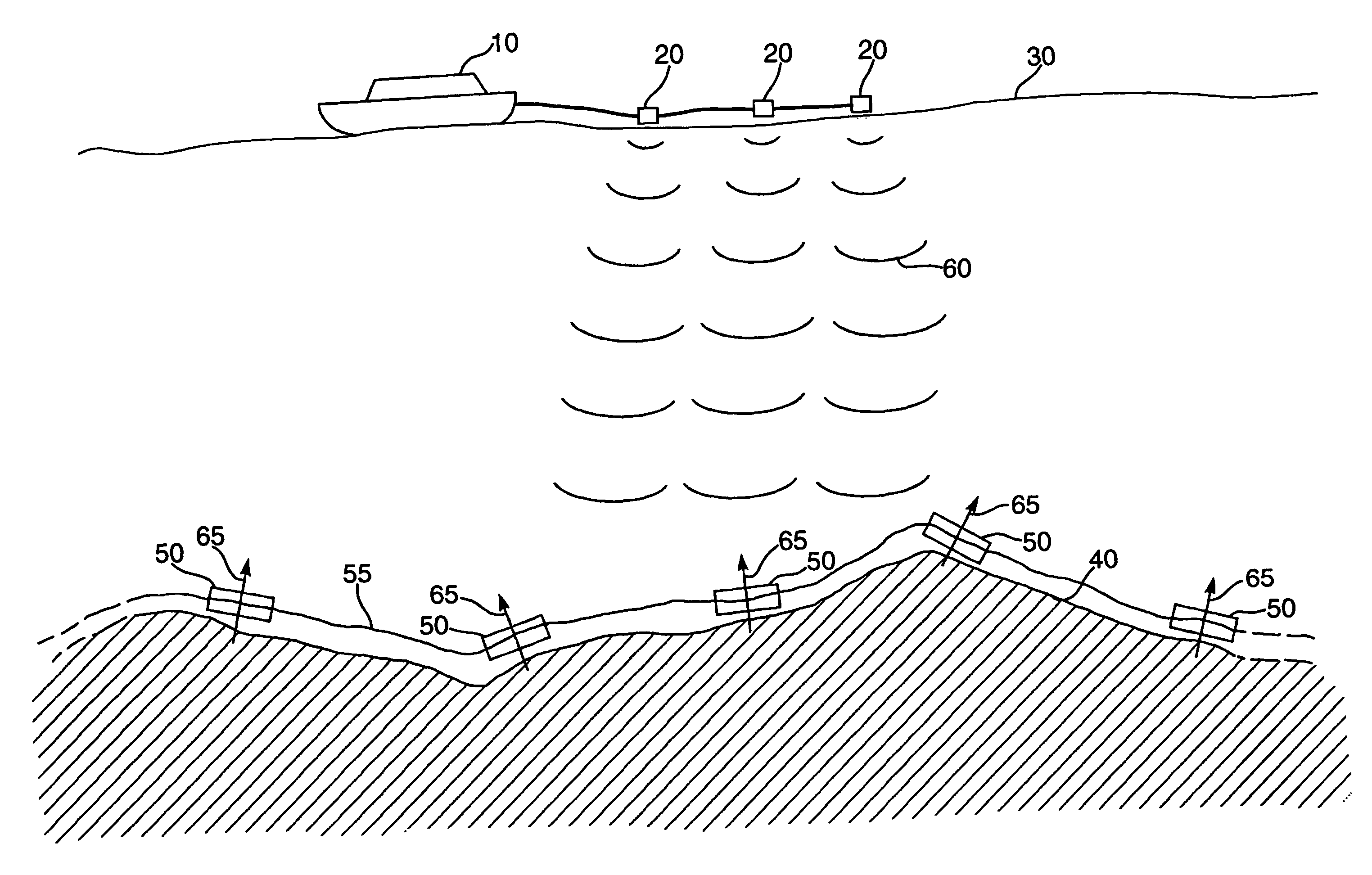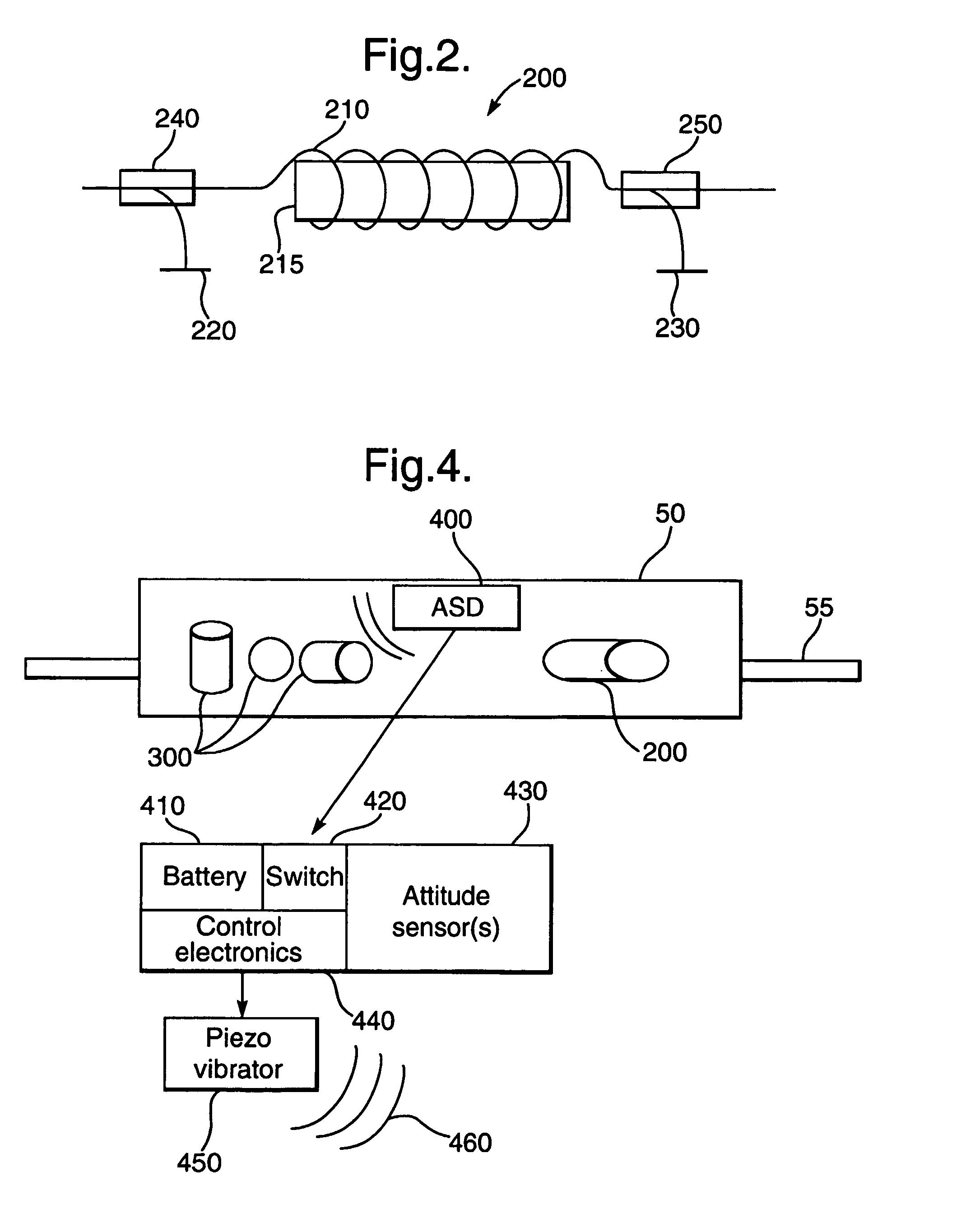Attitude sensor
a technology of attitude sensor and sensor package, which is applied in the direction of vibration measurement in solids, sonic/ultrasonic/infrasonic transmission, instruments, etc., can solve the problems of difficult to predict the settlement of the package, the complexity and size of the sensor package of the gimbal is significantly increased, and the complexity of the three-dimensional space is not known in general, so as to achieve accurate and accurate attitude sensing. , the effect of high performance and low cos
- Summary
- Abstract
- Description
- Claims
- Application Information
AI Technical Summary
Benefits of technology
Problems solved by technology
Method used
Image
Examples
Embodiment Construction
[0047]FIG. 1 is a diagram illustrating a deployment of a fibre optic seabed seismic array in accordance with an embodiment of the present invention. The array consists of a plurality of packages 50 coupled by a fibre optic cable 55. The array is deployed on the seabed 40, and depending on the depth of the seabed 40 below the sea surface 30, this deployment may be performed by divers positioning each package 50 on the seabed, or by the use of submersible vehicles to perform such positioning, or the array may be directly deployed from the surface without assistance at the seabed.
[0048]Attached to one end of the fibre optic cable 55 will be an optical signal source such as a laser for propagating an optical signal along the fibre optic cable 55, and some receive circuitry for detecting the signals returned from the sensors within each of the packages 50. This optical signal source and receive circuitry is not illustrated in FIG. 1, but would typically be located at some convenient loca...
PUM
 Login to View More
Login to View More Abstract
Description
Claims
Application Information
 Login to View More
Login to View More - R&D
- Intellectual Property
- Life Sciences
- Materials
- Tech Scout
- Unparalleled Data Quality
- Higher Quality Content
- 60% Fewer Hallucinations
Browse by: Latest US Patents, China's latest patents, Technical Efficacy Thesaurus, Application Domain, Technology Topic, Popular Technical Reports.
© 2025 PatSnap. All rights reserved.Legal|Privacy policy|Modern Slavery Act Transparency Statement|Sitemap|About US| Contact US: help@patsnap.com



